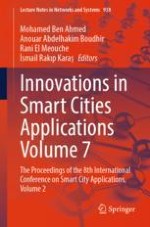2024 | OriginalPaper | Buchkapitel
3D Spatial Queries for High-Rise Buildings Using 3D Topology Rules
verfasst von : Syahiirah Salleh, Uznir Ujang, Suhaibah Azri, Tan Liat Choon
Erschienen in: Innovations in Smart Cities Applications Volume 7
Verlag: Springer Nature Switzerland
Aktivieren Sie unsere intelligente Suche, um passende Fachinhalte oder Patente zu finden.
Wählen Sie Textabschnitte aus um mit Künstlicher Intelligenz passenden Patente zu finden. powered by
Markieren Sie Textabschnitte, um KI-gestützt weitere passende Inhalte zu finden. powered by
